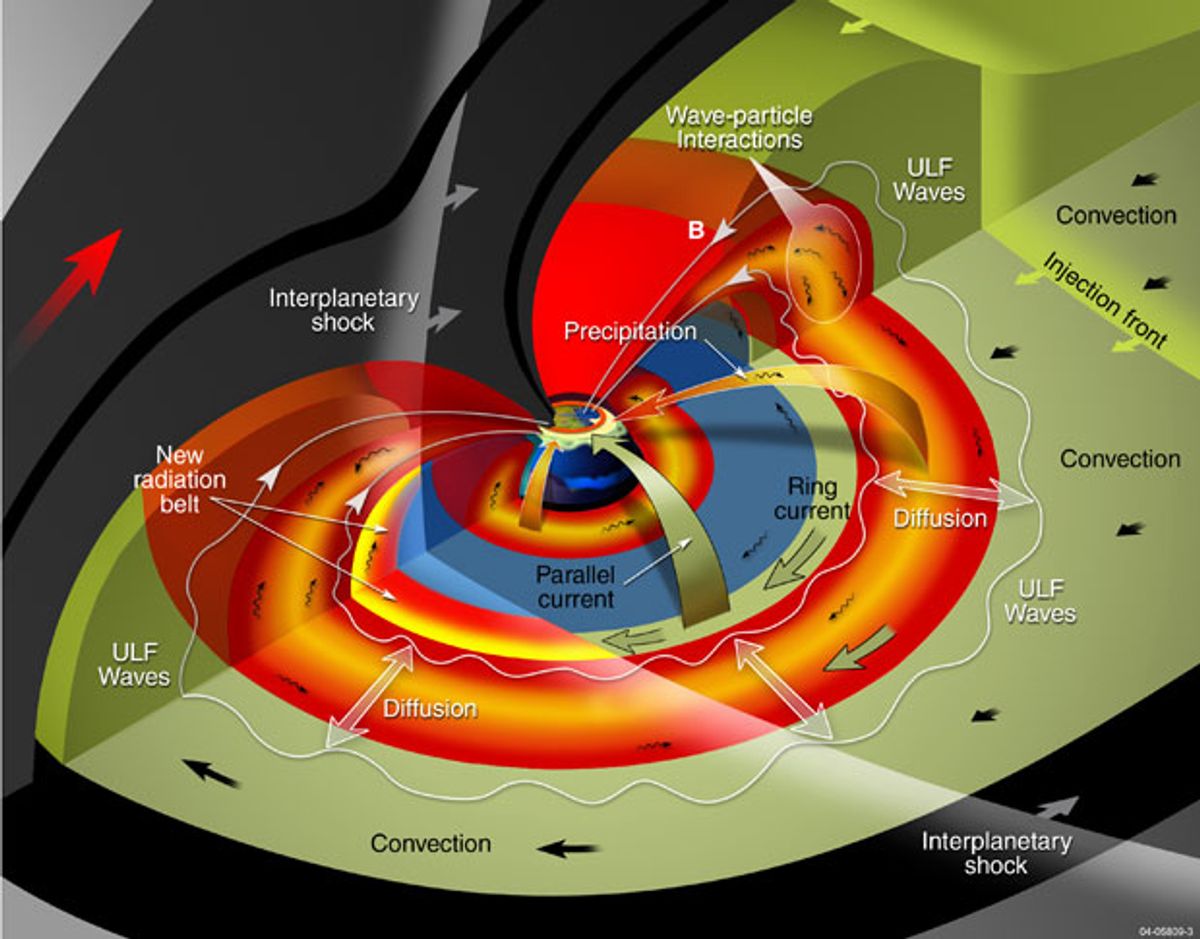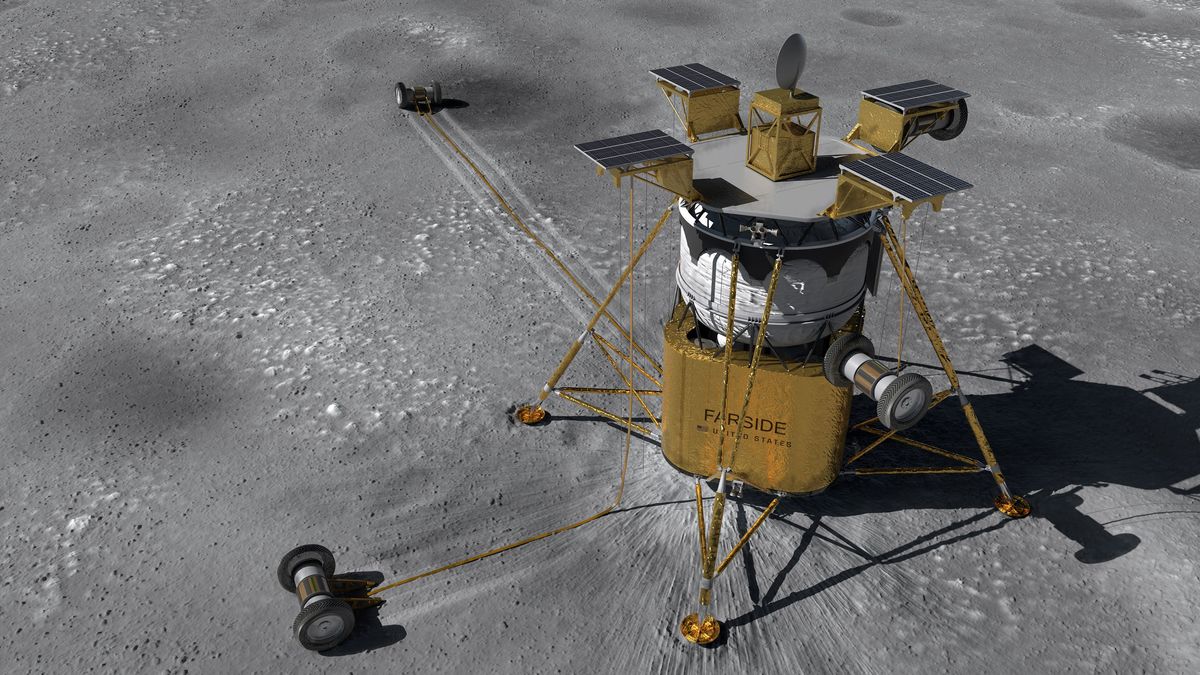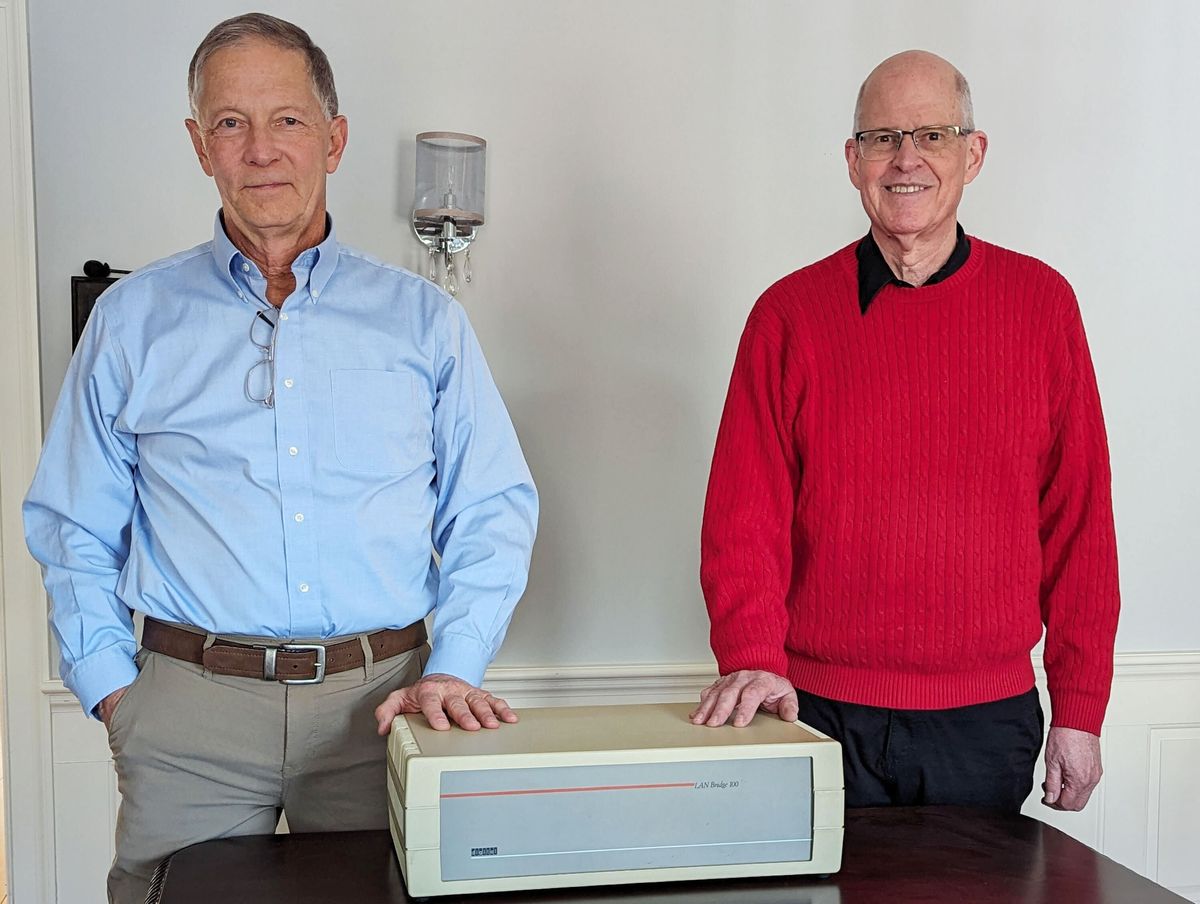From the time James Van Allen discovered the Earth-girdling radiation belts that bear his name in the 1950s, their structure has seemed stable and settled: two nested toroidal whirlpools of particles, with an inner belt of high energy electrons and protons circulating 1600 to 13000 kilometers above the surface; an outer belt consisting primarily of electrons boiling at altitudes of 19 000 to 40 000 km; and a separating, low-energy “slot.” The structure might throb and pulse a bit in the solar wind, but it otherwise seemed as solid and reliable as the moon.
It’s not.
Surprising data—fresh off NASA’s twin new Van Allen Probes—has forced scientists to revise that picture. The belts are far more mutable than anyone had imagined.
NASA launched the project’s identical satellites (originally christened the Radiation Belt Storm Probes) on 30 August 2012. The next day, a major coronal mass ejection erupted from the Sun. The researchers rushed to turn on the Van Allen Probe sensors, a month ahead of schedule. First to go online was the Relativistic Electron-Proton Telescope (REPT), designed and built by a 25-person team led by the University of Colorado’s Dan Baker. Its data revealed a radiation belt no one had anticipated.
In Science, Baker and colleagues report that the probe revealed a radiation structure that flickered and writhed like a candle flame in a stiff breeze. On 3-5 September, as stunning auroras blazed in Earth’s sky, the outer belt seemed to melt inward and compress into a tight, high-energy “storage ring” at an altitude of 13 000 to 16 000 km. Beginning on 7 September, the outer belt seemed to reassert itself, creating a new, three-ring, circuit.
The amazed researchers watched the system evolve over the following 30 days. The “distinctive ring of highly relativistic electrons” persisted with little change. Then, late on 1 October, the storage ring and the outer belt both collapsed and vanished. The inner belt remained stable, alone and apparently unperturbed by the drama above. Finally, about 10 October, the outer belt began to come back, and the familiar image of the dual Van Allen Belts reappeared.
In designing the matched REPT instruments (one for each Van Allen Probe satellite), Baker and his team emphasized stability, sensitivity, and speed—speed in particular, to allow the device to keep up with the heavy data flow and avoid information “dead spots” as it whipped around the globe. But most of all, he says, they sought precise resolution in time, space, and energy to give the most detailed picture of the electron distribution in the critical 1 to 20 MeV range. In other words, the team designed something that could capture phenomena no one could have anticipated.
Images: D. Baker/University of Colorado; NASA
Douglas McCormick is a freelance science writer and recovering entrepreneur. He has been chief editor of Nature Biotechnology, Pharmaceutical Technology, and Biotechniques.




